We are living through a decisive turning point in history. At such times, it is natural to look for reference points or historical parallels. But nothing seems to really fit what we are experiencing.
The Bank of England has said this will be the deepest crisis for 300 years, but even this is insufficient. In reality, the situation we are experiencing is unique.
To find anything remotely similar, we would have to go back to the Black Death of the fourteenth century, which wiped out between one third and half the population of Europe.
[This document was passed by the leading body of the International Marxist Tendency following a discussion on 12-13 September 2020. It updates our perspectives on the explosive world situation.]
People thought it was the end of the world. In reality, it was not the end of the world that was approaching, but the demise of a particular socio-economic system called feudalism. It marked the rise of a new revolutionary class, the nascent bourgeoisie, and the beginnings of the bourgeois revolution in Holland and England. The present pandemic, it is true, has not yet reached such dramatic levels. But in the end, it will prove to be even more devastating.
The disease continues its relentless advance, wreaking havoc in those poor countries that have no means of fighting it. The pandemic is raging out of control, especially in Africa, Asia and Latin America, but also in the United States. It has not yet resulted in such huge numbers of deaths as the Black Death. But the global death toll will reach more than a million by the end of September. At the time of writing, the total number of confirmed cases of coronavirus was over 24 million globally.
Despite encouraging noises from some governments, the effectiveness of vaccines have yet to be proven. As always, it is the poor people who suffer most. By exposing the inability of the market economy to offer any solutions to what is a life or death problem for millions of people, the capitalist system is increasingly being called into question.
It is important to point out that this pandemic is not the cause of the present economic crisis. That began long before this coronavirus was ever heard of. But the pandemic has undoubtedly complicated the whole situation and deepened the crisis. Dialectically, cause becomes effect, and effect, in turn, becomes cause.
Processes accelerated
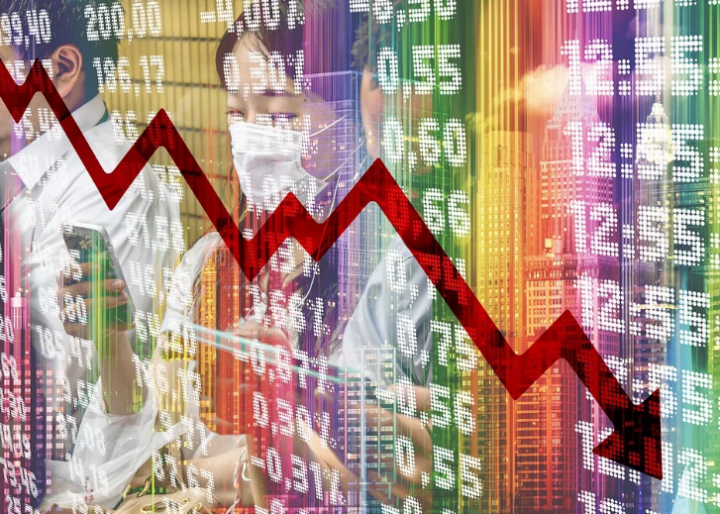
Engels pointed out that there were periods in history in which 20 years pass like a single day. But he added that there are other periods in which the history of 20 years can be summed up in 24 hours.
This remark accurately expresses the nature of the present situation, the main feature of which is the speed with which events are moving. Sharp and sudden turns are implicit in the whole situation.
If someone had predicted in January what was to occur in the following six months, nobody would have believed them. In fact, they would have thought him or her completely insane.
Firstly, the speed of the economic collapse is astonishing. The shock to the global economy from COVID-19 has been far faster and more severe than the 2008 financial crisis and even the Great Depression.
The economic collapse in the USA is as severe as it was during the Great Depression. But whereas the contraction after 1929 stretched over a four-year period, the coronavirus implosion played out over the course of four months.
Following the Wall Street Crash of 1929, stock markets collapsed by 50 percent or more, credit markets froze up, leading to massive bankruptcies and unemployment soared, while GDP contracted sharply. But all of this took around three years to develop.
In the current crisis, a similar economic and financial collapse occurred in the space of three weeks. It took only 15 days for the US stock market to fall 20 percent from its peak – the fastest such decline ever seen. And within a few months or weeks, unemployment in the USA reached 40 million. Consumption, capital spending and exports are experiencing an unprecedented freefall. To quote the words of Nouriel Roubini:
“Not even during the Great Depression and the second world war did the bulk of economic activity literally shut down, as it has in China, the US and Europe today.”
A global crisis
This is a global crisis of capitalism in every sense of the word.
Trump’s policy is ‘America First’, and he has pursued it aggressively. He wants to make America great again, but he has forgotten to add: at the expense of the rest of the world. Economic nationalism is the sum total of his thinking, insofar as he thinks at all. He boldly proclaims that a trade war is “good”. This will only intensify the crisis.
His ferocious attacks on China threaten to destroy the fragile fabric of world trade and globalisation. That, however, is only one symptom of this phenomenon. He has also imposed tariffs against a number of other countries including supposed allies like the EU, Canada and Japan. The pandemic has made matters worse, prompting a new round of protectionism, as well as an estimated 13 percent drop in world trade.
This means we are heading for a deep depression. Let us remember that what caused the Great Depression between the two world wars was not the crash of 1929 but the subsequent wave of protectionism, competitive devaluations and “beggar-thy-neighbour” policies, which attempted to export unemployment to other countries.
Colossal handouts
In order to avert an immediate collapse, governments poured trillions of dollars into the economy. Within days of the shutdown the US Congress agreed a stimulus package that is by far the biggest in US peacetime history. The same policies have been adopted all across the world. By the end of June, the G20 governments had announced stimulus packages of a total of 10 trillion dollars, or the equivalent of 12 percent of the world economy. But since then the EU has approved another 850 billion dollar package, and the US Congress is going to pass at least another trillion dollars in stimulus.
To counter the epic shock of the shutdown, the Federal Reserve mobilised an immense amount of liquidity. In the seven years following the 2008 crash, the Fed in several rounds bought around 3.5 trillion dollars worth of assets. In just three months of this crisis, the central bank bought 3 trillion dollars worth. Half of this was used to buy government debt to facilitate the stimulus packages, half was spent on the corporate bond and mortgage markets.
The colossal handouts that are being made to big business in order to cushion the effects are historically unprecedented. But even these eye watering sums – which make the Marshall Plan seem insignificant by comparison – will clearly not be enough to halt the downward slide of the economy.
The plain fact is that the capitalist economy can only exist at the present time thanks to enormous injections of funds by governments. All this has the effect of piling up a mountain of debt, and debts sooner or later must be paid.
Will there be a rebound?
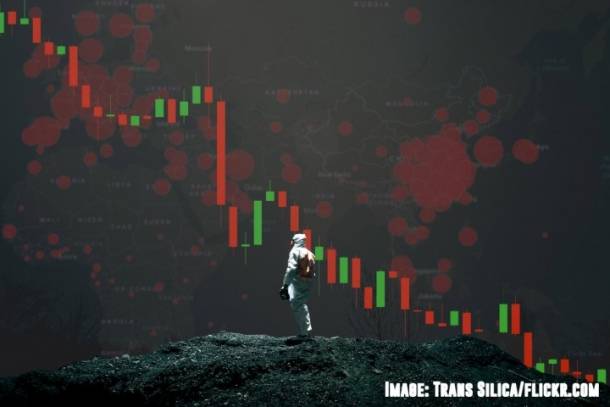
In order to console themselves, the economists are predicting a powerful recovery. That is an illusion. The truth is that in order to avert an immediate collapse, governments, as we have seen, have poured trillions of dollars into the economy.
On 9 April 2020, foreignpolicy.com published some interesting comments on the crisis. It said:
“This huge and immediate counterbalancing action has so far prevented an immediate global financial meltdown, but we now face a protracted period in which falling consumption and investment drive further contraction.”
Nouriel Roubini of the New York University’s Stern School of Business, writes:
“Only central governments have balance sheets large and strong enough to prevent the private sector’s collapse.”
But then he adds:
“But these deficit-financed interventions must be fully monetised. If they are financed through standard government debt, interest rates would rise sharply, and the recovery would be smothered in its cradle.”
That is to say, the central bank must keep printing money to fund government spending.
Roubini pours scorn on the excessively confident predictions about a so-called V-shaped recovery:
“The contraction that is now underway looks to be neither V- nor U- nor L-shaped (a sharp downturn followed by stagnation). Rather, it looks like an I: a vertical line representing financial markets and the real economy plummeting.”
This is the perspective, even without a new outbreak of the pandemic, which is not at all excluded. Instead of the promised economic rebound, the masses in all countries will be faced with decades of deep cuts in living standards, unemployment and austerity.
Who is going to pay?
Who is going to pay? That is the question that nobody wishes to ask, let alone answer. Martin Wolf, chief economist of the Financial Times, writes:
“The pandemic has forced vastly greater fiscal spending even compared with the financial crisis. This now raises the question of how this debt is going to be managed and who is going to pay.” (FT, 5/7/20)
But the answer is clear. The full weight of the crisis will be placed on the shoulders of those least able to pay: the poor, the old, the sick, the unemployed and the working class in general. But the middle-class will not emerge unscathed, either.
Some left reformists (for instance, Podemos in Spain) have foolishly drawn the conclusion that the large amounts given to companies to pay for furloughed workers from the public funds signifies a fundamental change in the nature of capitalism. They see it as the end of the “neo-liberal model” and a most welcome return to capitalism with a smiling (Keynesian) face.
And these ladies and gentlemen have the audacity to accuse the Marxists of being utopians! They will be singing another song when the governments that spent huge sums of money, which they did not possess, proceed to extract it from the people through tax increases and deep cuts in public spending.
The immense financial burden will be felt for years – maybe decades – to come, preventing any possibility of a serious recovery. And sooner or later, massive deficits will produce high inflation, a squeeze on credit, a massive contraction in borrowing, and a new collapse. That is the real perspective for the foreseeable future. It is a finished recipe for the class struggle in all countries.
This is understood by the more thinking representatives of the ruling class, as we see from the Financial Times, which pointed out on 9 March:
“Paying for the pandemic will raise all the same questions. A return to austerity would be madness – an invitation to widespread social unrest, if not revolution, and a godsend for the populists. Over time – a long time – the fiscal bills will have to be paid. Liberal democracy, however, will survive this second great economic shock only if the adjustments are made within the context of a new social contract that recognises the welfare of the majority over the interests of the privileged.” (FT, 9/3/20)
Just how this miracle is to be achieved the Financial Times does not explain. But these lines are very revealing. They show that the strategists of capital are coming to the same conclusion as the Marxists. The bourgeoisie is caught between a rock and a hard place. They understand that revolution is implicit in the present situation. And they are not mistaken.
“Tobogganing to disaster”

In 1938, Leon Trotsky referred to the ruling class of the world as “tobogganing to disaster with their eyes closed.” These lines could have been written today. The reaction of the bourgeois and its hired politicians to the coronavirus pandemic is one of blind panic.
In the past, even in moments of deep crisis and war, people felt that the government, if not exactly in control of the situation, at least had some kind of plan to get out of the crisis.
Today, that is not the case. The strategists of capital have been thrown completely off balance. The editorials of the serious bourgeois press reflect a state of bewilderment and alarm, which is close to despair.
The world is in its steepest economic collapse in history – and the old economic textbooks are overnight consigned to the dustbin. Companies cannot predict the future, investment is collapsing, and the economy has suffered a crisis that is far worse, and has taken a grip far faster, than in the 1930s. The economic forecasts of the IMF and World Bank are entirely worthless, since nobody can predict the outcome of the present coronavirus pandemic.
The situation is even worse when we come to the political leaders. There is an old saying that the people get the government they deserve. This is not strictly correct. But it is perfectly true that the ruling class in the present crisis has got the government it deserves.
Donald Trump in the USA, Boris Johnson in Britain and Bolsonaro in Brazil represent a personification of the intellectual and moral bankruptcy of the bourgeoisie in its stage of senile decay. They cheerfully lead their nations to the brink of the abyss, and throw them over it. Bad leadership makes a bad situation a thousand times worse. The bourgeoisie tears its hair and complains loudly about the situation, but can do nothing about it.
The USA
The most graphic expression of this is to be found in the USA, that is, the richest country in the world.
It is said that the Emperor Nero played his lyre while Rome burned. Now the Emperor Trump is imitating his notorious Roman predecessor, although he has finally agreed to put on a facemask – which is at least an improvement.
Millions of Americans have been fired or furloughed. Fast-food workers and grocery-store checkers are risking their lives for a minimum wage, while the pandemic rages out of control, subjecting millions of people to needless suffering and death.
New applications for unemployment benefits in the USA have soared to unheard-of levels, indicating a high number of layoffs and a rapidly shrinking labour market.
The suddenness of the collapse came as a shock to millions of American workers. Handouts of money from the government temporarily alleviated the situation. But the toll of the coronavirus outbreak kept rising inexorably.
And it fell hardest on those deprived areas mainly inhabited by poor people of colour and other ethnic minorities, making long-standing racial inequities even starker than before.
An insurrectionary movement

The simmering discontent and anger of millions of poor people, especially black people, in the USA finally exploded over the murder of George Floyd. This movement did not come from nowhere. It was the result of decades of exploitation, oppression, poverty, bad housing, racism and police violence.
Historian and Rice University professor Douglas Brinkley expressed the situation with admirable clarity: “The threads of our civic life could start unravelling, because everybody’s living in a tinderbox.”
There have been many such murders taking place over many decades, without provoking protests on this scale, but for millions of poor people in the USA, the murder of George Floyd was the straw that broke the camel’s back. The shocking images of police violence fell like a lighted match on a barrel of gunpowder.
In Minneapolis, where the movement started, the police had to flee from a crowd of angry demonstrators, who proceeded to burn down a police precinct. These were scenes of an insurrectionary character. But what is even more significant is the lightning speed with which events unfolded.
As if moved by some invisible hand, mass protests surged from coast to coast, engulfing one US city after another. At least 10 percent of the population participated in the protests and many more supported them. Astonishingly, a majority of Americans (54 percent) said that the burning down of a Minneapolis police precinct building was justified. Of even greater potential significance was the fact that 29 ports went on strike in solidarity, while in some cities bus drivers refused to convey riot police.
The state then cracked down with extreme brutality, and curfews were imposed in 200 cities. Yet the protests continued for weeks. This was an indication of things to come, a kind of dress rehearsal for the American revolution.
Events of this sort really have no precedent in recent American history. This movement is the final answer to all the sceptics and cowards who argued that the working class would never move, and least of all in the United States.
Splits in the ruling class
Splits in the ruling class are the first indication of a developing revolutionary situation. Trump wanted to use the army to crush the revolt. But this provoked a rebellion on the part of the army chiefs, and even part of the Republicans.
CNN quoted Ministry of Defence officials who stated there was “deep and growing discomfort” among some in the Pentagon even before the President announced that he was ready to deploy the military to enforce order in US cities. The Wall Street Journal carried the headline: ‘Don’t Call in the Troops.’ It said: “In the current moment, the sight of troops on US streets would be more likely to inflame than calm…”
Trump later sent troops from Homeland Security to suppress demonstrations in Portland. Just as the WSJ predicted, the effect was to create an even bigger and more violent movement. It became almost like civil war on the streets. Thus, Donald Trump has been doing the work of the revolution very effectively!
This shows the limitations of the powers of the state. They show us the shape of things to come.
Limits of spontaneity
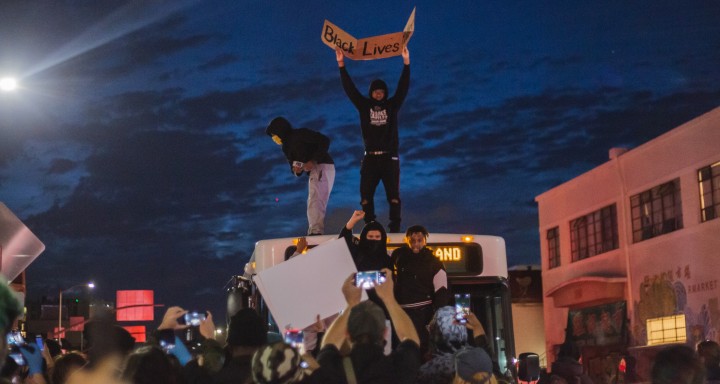
In 1938, Leon Trotsky wrote that one could reduce the crisis of humanity to the crisis of leadership of the proletariat. We should think carefully about what these words mean. It goes without saying that the movement of the masses is always the principal motor force of revolution. On this, we agree with the anarchists. But their conclusion ends where the real problems of the revolution begin.
What do the events in the United States show? They have revealed the enormous potential power of the masses. They show us that there is a power in society that is stronger than even the strongest state, army or police force. Yes, that is perfectly true. The spontaneous movement of the masses is the prior condition for socialist revolution. But in and of itself, it is not sufficient to guarantee success.
Likewise, steam is also an enormous power. It is the power that drove the Industrial Revolution, and continues to drive economic life to this day. But steam is only a power when it is concentrated in a single point, a piston box, which centralises its power and increases it a thousandfold. Without this, the steam would merely evaporate uselessly into the air.
It is the same with revolution. Without the necessary organisation and leadership, the enormous power of the working class would remain only a potential, not an actual power.
The history of war gives us many examples where a big army of brave soldiers has been defeated by a far smaller force of disciplined troops led by experienced officers. And the war between the classes has many points of similarity with war between nations.
What we saw in the USA shows the limitations of the powers of the state when faced with a mass uprising, like the one we saw in that country. This spontaneous movement of the masses is the prior condition for socialist revolution. But in and of itself, it is not sufficient to guarantee success. Something was lacking, and that something is an organisation and a leadership that is capable of showing a way forward.
Without the necessary organisation and leadership, the protests were bound to ebb sooner or later. The surprising thing was that they lasted as long as they did. Was this a revolution? Clearly it was not yet a revolution. But it can most certainly be seen as the dress rehearsal for revolution in the future.
Nothing will ever be the same
There is a huge change in consciousness in the USA. The polls show a rise in support for socialism. 67 percent of young people would vote for a socialist president. Even more surprising, 30 percent of the over 65s would do likewise, if given the chance. But they were not given the chance.
Bernie Sanders, after arousing the hopes of millions of people, refused to stand as a socialist, although there was big support for a new party. Instead, he chose to back Joe Biden as the Democrat candidate, using the argument of the need to defeat Trump. This argument will doubtless carry some weight with many people desperate to get rid of him. But many others will turn away in disgust.
The elections are in November and many things can happen between now and then, but the election campaign has already started. Trump tried to play the “Law and Order” card, but that has backfired. Now he is constantly repeating that the election will be rigged because of postal voting. This fact is a clear indication that he expects to lose. The polls indeed show that he is losing ground. That, however, does not necessarily mean that he will lose.
Many people have drawn the correct conclusion that the choice between Democrats and Republicans is no choice at all. And there is a corresponding growth in interest in socialist, and even communist, ideas. This is shown by the rapid advances made by our US section, but also by the growth of the DSA membership in chapters around the country has surged. An estimated 10,000 people have joined since March, bringing the group’s total membership to roughly 66,000, according to internal figures.
One thing is clear. No matter who sits in the White House next year, nothing will ever be the same again. Turbulent times lie ahead for the USA. There will be victories and there will be defeats. But for a whole period, the pendulum will swing sharply to the left.
The need for dialectics

Only a knowledge of the Marxist dialectical method can enable one to look beyond the surface (the “facts”) and penetrate the real processes that are maturing slowly beneath the surface.
Superficial empirics and impressionistic observers were taken aback by these movements, which appeared to come out of nowhere, like a thunderbolt from a clear blue sky. But the present upheavals do not come from nowhere. They were prepared by the whole of the preceding period.
The lack of dialectical thinking is what explains the complete impotence of the strategists of capital, who are unable to explain the present crisis, or provide a solution for it. It also applies to the middle-class and the intelligentsia, which is seized by modes of black despair, reflected in the influence of postmodernism, which denies the possibility of progress in general, simply because progress under capitalism has ground to a halt.
Dialectically, everything sooner or later turns into its opposite. The consciousness of the working class does not develop in a straight line. For a long time, it can lag behind events. But sooner or later, it catches up with a bang. That is precisely what a revolution is. We now see this process unfolding before our eyes.
We must bear in mind that the revolutionary upheavals began already last year, in Sudan, Lebanon, Iraq, Ecuador, Chile, etc. Above all, the radicalisation is reflected in a rapid change in the consciousness of the masses.
How consciousness changes
The lag in consciousness which we have commented on in the past is now replaced by violent explosions on the part of the masses. Everywhere we look we see growing discontent, anger, fury and a hatred of the existing order.
This expresses itself in different ways in different countries. But everywhere we see that the masses, the workers and youth, are beginning to move, to challenge the old order and fight against it. It is sufficient to mention the events which are taking place right now.
Let us take two highly significant examples: Israel and Lebanon. If there was a country in the world where many people thought that the class struggle was finished, that was Israel. It seemed to most people that Netanyahu was in complete control of the situation. But now the crisis has hit Israel, living standards are falling and unemployment is growing. And the masses have taken to the streets to demand the overthrow of the government of Netanyahu.
In Lebanon we have an even more striking example. Following the revolutionary movement that swept the country at the end of last year, the explosion in the port of Beirut, which devastated the city and left 300,000 people homeless, has sparked off a new and even more determined revolutionary movement. Not so long ago, it seemed that such a movement was impossible, because of the sharp sectarian divisions in Lebanese society. Yet now we see a colossal upsurge in the revolution, with all sections of the working class uniting in struggle.
These explosions of popular anger did not drop from the clouds. They were prepared by the course of the whole previous period, especially the last ten years of austerity.
Belarus and Russia

A similar dramatic change is unfolding before our eyes in Belarus, where a protest movement against Lukashenko has taken on a massive character. It is true that this movement has a confused and contradictory nature.
The petty bourgeois leadership would like to speed up the process of privatisation and establish closer relations with the EU. But the emergence of the working class as a key force, moving in the direction of a general strike, has become an important element in the equation. The workers in the state-owned industries will not share the enthusiasm of the liberals for privatisation and market economics.
The situation is not the same as it was in Ukraine, where the movement was dominated by extreme reactionary nationalist and openly fascist elements. In Belarus there is not the same anti-Russian sentiment in the population. Belarus is so closely integrated with Russia economically, linguistically and historically, that it is hard to see it breaking with Moscow and turning to the West.
It is not possible to say how the present movement will end. Putin will be watching these events with growing alarm. But Putin’s options in Belarus are limited. An armed intervention would be madness. That would antagonise the people and create the kind of anti-Russian feeling that would push them towards the West. In any case, Putin has no particular interest in saving Lukashenko, quite the opposite, in fact.
The Kremlin clique will undoubtedly be intriguing with the top bureaucrats in Minsk to find a suitable “reformist” figure to replace the disgraced Lukashenko and arrive at a deal with Moscow. Whether such a manoeuvre succeeds depends on the future evolution of the mass movement itself.
The movement in Belarus will have serious repercussions in Russia. Putin fears, with reason, that a similar movement could erupt in Russia. Events in Khabarovsk indicate that these fears are not without foundation. The poisoning of the liberal oppositionist Navalny may have been a panic reaction. In any case, the contradictions in Russia are all pointing to the maturing of an explosive situation
Europe
Nationalism, not international cooperation, is the dominant feature of the present period. It threatens the whole fragile system of international trade that was painfully put together by the bourgeoisie in the decades following the Second World War.
The trade war between the USA and China is only one symptom of this phenomenon. But there is also a trade war between the USA and Europe. And even between European nations, dangerous fault lines are emerging all the time.
We pointed out a long time ago that the European bourgeois could maintain a degree of integration for some time, but in the event of a deep slump, the process would be thrown into reverse. This is now clearly the case.
Germany
Germany was the main motor force of the European economy, but it has been hit hard by the crisis. Its principal strength lay in its ability to export. But this strength now turns out to be its principal weakness. The slowdown in China and the crisis in the rest of Europe have caused a sharp slump in exports, especially in the key automotive sector.
Already, in the last quarter of 2019, Germany’s GDP was falling. Now Germany’s GDP is predicted to fall by more than that of the United States, dragged down by its dependence on exports. There is overproduction of cars, leading to factory closures, sackings, and destruction of jobs in most parts of the economy. There are at least three million unemployed. And that does not include the self-employed or students.
All this has exposed all the fault lines that are tearing the EU apart.
The EU divided

There is a growing split with the East European member states. Many in Brussels think countries like Poland and Hungary should only get money if they abandon policies on judicial reform seen by their critics as assaults on the rule of law.
However, the main division now is between countries hit hardest by the virus – such as Italy and Spain – and some EU members seeking to hang on to their cash. Italy in particular was one of the earliest European countries to suffer an outbreak and has recorded 35,000 deaths – one of the highest tolls in the world. These tensions were exposed in the recent meeting in which EU leaders struggled to negotiate the stimulus package to help countries recover from the pandemic at the same time as the bloc’s €1tn seven-year budget.
Sweden, Denmark, Austria and the Netherlands, along with Finland, were stubbornly refusing to allow €500bn to be offered in the forms of grants to countries hardest hit by the effects of COVID-19. They argued that the proposed package was too generous, and anyway should not be a handout but repayable loans. These supposedly civilised leaders, a majority of whom were Social Democrats, were arguing like horse traders in the mediaeval marketplace.
At the end of a long and fractious meeting, with EU leaders insulting each other and Macron banging the table and threatening to walk out, in the end an uneasy deal was struck. They had no choice but to agree to a compromise deal. But the ideal of European solidarity was thrown out of the window in the process.
Italy
At the centre of this fracas was the Italian question. Failure to reach agreement could have led to the collapse of the coalition government in Italy, and the possibility of a revival of Salvini and the anti-European League.
The centre of the crisis of the EU has moved from Greece to Italy, which is now the sick man of Europe. It is the weakest link in the chain of European capitalism. The crisis in Italy poses a far greater threat to the future of the EU than Greece ever did. Greece, after all, is a relatively small nation. But Italy is a big economy, which accounts for 11 percent of the GDP of the European Union. Italy’s huge debt of 2,500 billion euros could bring down EU finances and Italy’s collapse could lead to the destruction of the EU itself. That is what explains the cautious attitude of Merkel. It was impossible for her to take the same hard line with Italy as with Greece. She was obliged partially to change her tune. It also partly explains the angry outbursts of the French President at the recent summit of EU leaders.
The coronavirus crisis has exposed the extreme weakness of Italian capitalism and the corruption and incompetence at the heart of its government. The north of Italy was hit hard by the coronavirus crisis. It accounts for 50 percent of Italian GDP. Yet this prosperous region witnessed scenes of death and destruction that one would normally associate with a Third World country.
The way the government has dealt with the COVID-19 crisis has caused rage and indignation. Workers had to work 12 to 14 hours without extra pay, even Saturdays, particularly health workers who were risking their lives. That expresses the cruel disregard for workers’ lives and health on the part of the bosses.
Sudden and sharp changes in consciousness are evident. Teachers and students have been radicalised and are ready to fight. There was a wave of unofficial strikes, spontaneously called from below, but the reformists and the union leaders did their best to hold the movement back. The bosses are on the offensive, but union leaders seek a social pact, even though there are no conditions for it.
This contradiction is leading to a rapid loss of authority of the trade union leadership, which prepares the way for even bigger explosions in the coming period. The stage is set for an explosion of the class struggle such as has not been seen since the 1970s. This has serious implications for the whole of Europe.
France – next in line
Although the most immediate problem is the crisis in Italy, France itself is not far behind. That explains the reaction of Emmanuel Macron to the stubbornness of the north Europeans. He reportedly banged his hand on the table and threatened to walk out of the discussions, accusing the “frugal four” of putting the European project in danger.
The French president said there was “no choice” but to set up a fund that “could issue common debt with a common guarantee” to finance member states according to their needs rather than the size of their economies. But this is an idea that Germany and the Netherlands have opposed.
Bruno Le Maire, France’s finance minister, put the challenge starkly:
“Either the eurozone responds in a united manner to the economic crisis and emerges stronger, or it is at sixes and sevens and is in danger of disappearing.” (FT, 23/3/20)
But Europe is not responding in a united manner. On the contrary, the economic crisis has enormously exacerbated national differences and driven the ruling class in different countries in different directions. Brexit was only the start of a process of disintegration that is far from finished, and will cause one convulsive crisis after another.
Britain

The immediate effect of Brexit will be disastrous for Europe and catastrophic for Britain. Having left the European Union, the British bourgeoisie will find itself in the worst of all worlds.
All the stupid chauvinist illusions will be cruelly exposed for the fraud they always were. Britain will find itself reduced to the role of an unimportant little island off the coast of Europe. Britain’s much vaunted “special relationship” with America will stand exposed as the humiliating relationship between master and servant. The prestige that it enjoyed in the world in the past will collapse overnight like a house of cards.
Martin Wolf predicted in a gloomy assessment in the Financial Times:
“A ‘global Britain’ will not emerge, but one seeking crumbs from the tables of more powerful trading powers, themselves engaged in vicious squabbling.” (FT, 21/5/20)
Already, the national contradictions tearing at the fabric of the United Kingdom are coming to the fore. Support for independence in Scotland is now leading the opinion polls by 7-9 percentage points, as hatred and resentment against the Tory government increases.
Boris Johnson may well find himself the Prime Minister, not of Great Britain, but of Little England.
China
China was one of the main motor forces driving the world economy in the last period. But now, dialectically everything turns into its opposite. China is no longer seen as part of the solution, but part of the problem.
China has built up a formidable industrial base with a huge productive capacity. But internal demand cannot absorb this colossal productive potential. China must export to survive. But its success in the field of exports has now provoked a furious response from its competitors, particularly in the USA, but also in Europe.
Even before the present crisis, the Chinese economy was slowing down at an alarming rate, but the crisis pushed the economy over the edge. In the first quarter, JPMorgan Chase was predicting a fall of 40 percent in Chinese gross domestic product from the previous three months, the biggest contraction in at least 50 years.
The latest official figures show China’s unemployment at 5.9 percent, the highest figure since records began in the 1990s. But that figure is clearly a gross understatement of the crisis in China, as migrant workers are not included in the statistics.
This explains why Xi Jinping is taking steps to strengthen his dictatorial powers and crush the movement in Hong Kong. It is a preparation for a future explosion of the class struggle in China, which is now brewing.
“Horror without end”

Lenin once said that capitalism is horror without end. We can now see the literal truth of the statement. The UN World Food Programme recently warned that over 265 million people are threatened with starvation. The social consequences of the coronavirus pandemic in advanced capitalist countries are bad enough, but poor countries face an absolute catastrophe.
Even in the richest countries like the USA, the pandemic has had terrible effects among the poorest sections of society. But for most of humanity, this crisis is on an entirely different level.
The coronavirus pandemic harshly exposes the brutal levels of inequality in the world. One in two people on the planet struggle daily to survive. Half of the world’s population does not have access to basic health care. For people in poverty, illness can be a death sentence. Globally, two billion people work in the informal sector with no access to sick pay, the majority in poor countries.
The impact of the virus falls most heavily on the poor, daily wage and informal workers, many of whom are women, who lack financial and social protection. Millions of people are forced to go to work and face death from the killer virus because they are unable to cope with loss of earnings and rising prices of food and other essentials. In poor countries, many people live in informal urban settlements or slums where there is often overcrowding and poor sanitation. When up to 250 people share one tap of water, how can one speak of social distancing, washing hands and tracing cases to stop the virus spreading further?
Yet instead of investing in their healthcare systems to defend against the onslaught of the virus, these countries have to use their precious resources to pay off their debts. The external debt payments of the 77 poorest countries is due to be at least 40 billion dollars in 2020 alone. Thus, even while half the world is ravaged by a terrible pandemic and millions face death either from disease or starvation, the imperialist vampires continue to drain the blood from their veins.
Africa
South Africa, which saw one of the largest single-day rises in cases, has the highest number of confirmed infections on the African continent. Egypt has seen case numbers rising rapidly since mid-May. Lesotho and Namibia have also seen steep increases in cases in recent days.
There is growing concern about what is happening in Nigeria, which is third in terms of total cases recorded so far on the continent. The top five for death rates are Chad, Sudan, Niger, Liberia and Burkina Faso. In Malawi, there are just 25 intensive care beds and 16 ventilators for more than 18 million people. In Zambia, there is one doctor for 12,000 people.
In many countries, markets have been disrupted and community quarantines have led to losses in income. Millions of workers have already been sent home without pay. Others in the lowest-paid and most insecure jobs cannot isolate themselves from the deadly virus. The UN warns that half of all jobs in Africa are at risk.
India and Pakistan
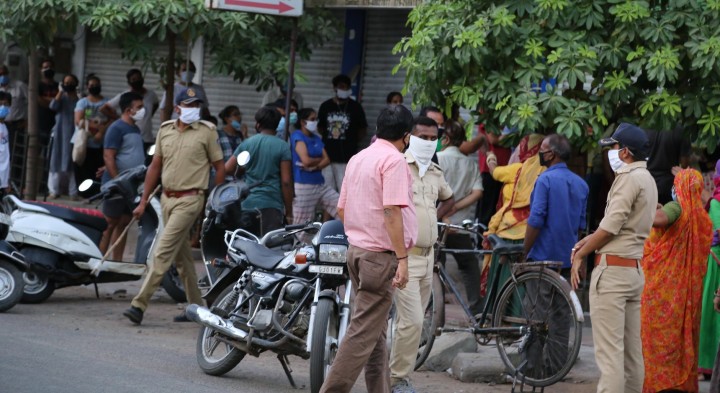
The coronavirus pandemic has had a devastating effect in Pakistan, but the situation has reached the most dramatic levels in India. The true extent of contagion and deaths caused by COVID-19 are only just beginning to be understood. The official figures state that over two million people have been infected. This is almost certainly an underestimate.
Scientists have also warned that India could still be months away from the peak of its outbreak – despite already having the third-highest number of confirmed cases. Hospitals in the worst-hit cities, including Mumbai and Bangalore, have been overwhelmed with patients. Narendra Modi tried to “solve” the pandemic by driving out millions of poor people who live on the streets of Delhi, Mumbai and other cities. This only served to spread the pandemic to the villages and provinces, which lack the most elementary health provisions. The human consequences will be truly frightful.
Of India’s workforce of 471 million, only 9 percent are covered by social security, 90 percent have no formal employment contract, and 139 million are migrant workers. Many of them have been sent in headlong flight back to their villages. There has been nothing like it since partition in 1947.
Modi and his Hindu chauvinist gang are trying to divert attention away from the crisis by whipping up the flames of Hindu chauvinism and communalism, stoking up even more misery and violence for the suffering masses of India. Not satisfied with carrying out a vicious crackdown in Kashmir, and thus provoking a conflict with Pakistan, he then proceeded to engage in a border war with China, from which he will emerge with a bloody nose.
Latin America
In Latin America, the coronavirus has now assumed its most virulent expression. In countries like Brazil, Chile, Ecuador and Peru it is raging out of control. In some cities of Ecuador, the cemeteries are full and corpses are left lying in the streets.
The right-wing governments have shown themselves completely incapable of dealing with this threat to people’s lives. On the contrary, by their cruel and irresponsible conduct, they have made the crisis a million times worse. But the mood in Latin America has been enormously encouraged by developments in the United States.
The mass protests and the Black Lives Matter movement have raised the spirits of people south of the Rio Grande, most of whom never believed that such things would be possible in the heartland of imperialism. The masses are prepared to struggle. But once again it is a problem of leadership.
Brazil and Chile

In Brazil, despite the stupid hysteria of the so-called left and the sects, who imagined that fascism had triumphed with the electoral victory of Bolsonaro, his base has shrunk and his party is split.
In the country, there are already almost four million people infected by the coronavirus, including the president, for whom no tears will be shed. He will have the best doctors. But for many poor people in Brazil, this will be a death sentence.
The coronavirus crisis is temporarily holding the movement back. But beneath the surface there is tremendous anger against the government, and the moment the lockdown eases, this will express itself in a massive revolutionary upsurge.
The case of Brazil is well-known. But the conduct of the authorities in Chile is not much better. The right-wing government of Piñera is presiding over a national disaster.
Chile witnessed mass insurrectionary protests in the autumn of 2019, and there is the beginning of a new movement of protest directed mainly at the privatised pension service – inherited from the Pinochet dictatorship. People who are desperate for money to survive are demanding the right to withdraw their cash from the privatised AFP.
The government is resisting, but has suffered two defeats in Parliament. A new movement could easily bring it down. There was recently a strike of dockers protesting against the scandal. Now the miners are threatening to strike.
The Piñera government was forced to make a concession on the AFP, allowing people to withdraw 10 percent of their money. This shows just how weak his government is. The government only remains in power because of the compromising attitude of the parliamentary left and the trade union leaders. But nothing fundamental has been solved and a new social explosion is being prepared.
The crisis of reformism
Revolutionary possibilities are implicit in the whole situation. This fact is shown by the increasing radicalisation of a layer of society, especially the youth. This tendency has been observed with alarm by the strategists of capital. The Financial Times commented:
“The financial crisis shaped the views of millennials in ways that are already driving politics on both sides of the Atlantic, including the greater willingness of younger people to refer to themselves as socialists.
“Millennials elevated Jeremy Corbyn to the leadership of the Labour party and Bernie Sanders to the verge of the Democratic presidential nomination. Coronavirus is likely to sharpen many of these views.”
This is a very revealing article that shows how the serious strategists of capital come to similar conclusions to the Marxists. They also understand that, in the first instance, the newly awakened layers will turn to the left reformists. Such a development is entirely predictable under present conditions.
Left reformism
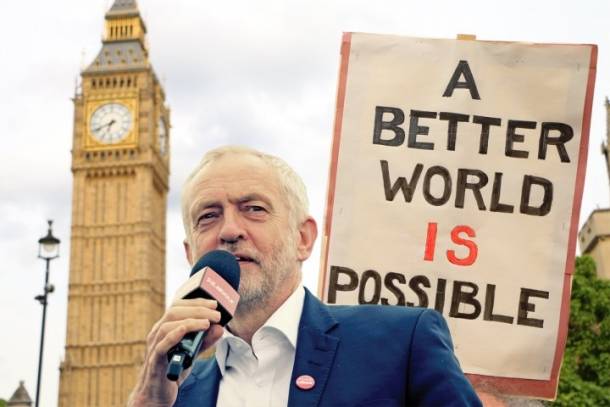
Because of the weakness of the forces of genuine Marxism, in the first instance, these radicalised layers will turn towards left reformist politicians, who seem to offer a way out of the crisis.
Reflecting the pressure of the masses, they can adopt a very radical sounding rhetoric. But in the last analysis, they have no perspective of abolishing capitalism.
They believe that capitalism can be reformed, made more humane, more democratic and so on. These illusions will be cruelly exposed by the course of events, as we already saw in the case of Tsipras in Greece.
For the reformists, revolution is always out of the question, not only the right reformists but in particular the left reformists. They will always find a thousand and one arguments as to why revolution is impossible, utopian and so on and so forth.
The masses are being forced at last to face reality. They are slowly beginning to draw conclusions. That is our great strength and the great weakness of capitalism and reformism. It will take time, but sooner or later the old illusions will gradually be burnt out of the consciousness of the working class.
Large numbers of radicalised workers and youth have passed through the school of Tsipras, Sanders and Jeremy Corbyn. The best elements have learned valuable lessons from that school. Having graduated, they have now passed to a higher level and are seeking further enlightenment in the school of revolutionary Marxism. We should help them to make that transition. But how is that to be done? Two mistakes are possible here.
The opportunists make no criticism of the Lefts and become in effect a kind of fan club. At the other extreme, the mindless sectarians who think they are great revolutionaries because they have read a few lines of Trotsky, without understanding a single word, declare loudly that this or that left leader will betray. There is no room in the ranks of the IMT for either of those deviations. It is hard to say which of the two does more harm to the cause of genuine Marxism.
In dealing with the left reformists we must be careful to skilfully combine firmness on principles with the necessary flexibility and tact in how we make our criticisms. To quote the words of Marx, we must be “mild in manner and bold in content.” Only in this way can we win the best of the workers and youth who have honest illusions in the Lefts.
We must answer the left reformists, not by shrill denunciations but by patient explanation. Through experience, the people who are moving in a revolutionary direction will come to understand the limitations, not only of the right reformists but also of the Lefts.
The death agony of capitalism
Everywhere we look, we see a picture of collapse of the productive forces, growing unemployment, increasing poverty and suffering, wars, crisis, sickness and death. But these are merely the external manifestations of an underlying disease. And like a good doctor, we must be capable of analysing the symptoms in order to explain the underlying cause.
People who lack a scientific Marxist understanding of history naturally draw pessimistic conclusions. But we have seen the symptoms before history.
The decline of the Roman Empire took place over a period of centuries and was accompanied by the most frightful economic, social, moral and philosophical degeneration. That long period of decline, however, did not proceed in a straight line. There were periods of recovery, just as a dying man sometimes seems to display all the symptoms of recovery, which are merely the prelude to a further and irrevocable collapse.
Such periods of recovery are by no means ruled out for capitalism. But the general line is clearly one of decline. No lasting solution is possible. To use a famous phrase by Trotsky, this is the death agony of capitalism. And this death agony threatens the entire human race.
The force of inertia
In analysing phenomena, Marxists must take care to examine them from all points of view, taking into consideration the contradictory forces that are pulling in different directions.
We have entered into the most turbulent period in human history. The present economic, social and political crisis cannot find a lasting solution on the basis of the present system. That does not mean, of course, that at certain moments a degree of unstable equilibrium cannot be re-established. On the contrary, periods of temporary recovery are inevitable. But they will be of short duration, and will merely be the prelude to a new and even steeper collapse.
The present situation represents a complicated parallelogram of forces. On the one hand, the masses are desperately seeking to find a way out of the crisis. They are ready to take the revolutionary road, but they lack a clear programme and perspective for the way forward.
Consequently, the spontaneous outbreaks of rebellion cannot solve the problems posed. Therefore, at a certain stage, they subside, like the waves of the ocean that clash against solid rock, and eventually are subdued.
The existing order possesses a powerful resistivity. This gives confidence to some of the strategists of the bourgeoisie. The American historian Eric Foner recently made the following statement:
“There seems to be a very powerful inertia pushing us back to normal. I’m sceptical of those who think this coronavirus is going to change everything.”
It is necessary for us to consider these remarks very carefully, since they contain an important kernel of truth.
Of course, we attach enormous importance to the present wave of struggles in the USA and other countries. We welcome this, and we embrace it with every possible enthusiasm. But we also understand that these are symptoms that represent an embryonic expression of great events that are being prepared.
In order to work out the correct perspective and the correct tactics, we must understand the other side of the question. The power of inertia is a well-known and simple elementary element in mechanics. But even the most powerful inertia can be overcome by a sufficient application of force.
The most powerful inertia of all is the force of habit, customs and tradition that lay heavily on human consciousness. Instincts inherited from a very distant past make people resistant to change and fearful of it. In order to make a leap forward, this barrier must be overcome. But that can only come about through the most powerful social and economic catastrophes, which compel men and women to question things that until now they considered as fixed and unchanging.
The task of revolutionaries

The capitalist system is on life support. It depends now exclusively on colossal handouts from the state. But according to the theories of market economics, the state is not supposed to play any role in economic life.
The question must therefore be asked: if the capitalist system cannot survive unless it is propped up by the crutches of the state, why not abolish it altogether, and let the state take complete control of the economy to save it from falling into complete and absolute bankruptcy?
The present situation is a complete condemnation of the capitalist system, which has outlived its historical role and is fit only to be discarded into the dustbin of history. But we know that capitalism will not simply collapse under the weight of its own contradictions. It can get out of even the deepest crisis, and it will emerge from the present one also. The question is, however: how will it emerge, and at what cost to humanity?
Although periods of partial and temporary recovery are by no means ruled out, the general line is clearly one of decline. The next recovery will only be temporary, the prelude to a new and even deeper collapse of the productive forces. Under capitalism no lasting solution is possible.
Capitalism today resembles a monster that is dying on its feet, terminally sick, decrepit and decaying. But it refuses to die. And the consequences for humanity for this prolongation are frightful in the extreme. However, that is only one side of the picture. Beneath the symptoms of terminal decay, a new society is struggling to be born.
It is our duty to do everything in our power to shorten this death agony, and to bring about the birth of the new system, to assist that birth, so that it should occur as soon as possible, and with as little pain and suffering as possible.
Determinism is not fatalism
Marxism is based upon the materialist conception of history. We reject the post-modernist (idealist) conception of history as a mere repetition of meaningless accidents. History has its own laws, which it is our duty to understand.
We are historical determinists, in the sense that we understand that the general processes of history functions according to definite laws. But determinism is not at all the same thing as fatalism. Marx explained many times that men and women make their own history. When a socio-economic system enters a stage of decline, social revolution is placed on the order of the day.
But whether that revolution will succeed or fail depends on the active involvement of the subjective factor: in modern terms, the revolutionary party and its leadership.
In the seventeenth century in England, the first bourgeois revolution was fought out under the banner of religion. Puritans believed the end of the world was approaching, and that the kingdom of God was at hand. They believed this was inevitable.
The Calvinists believed fervently in predestination. Everything was preordained by the will of God, which was far greater than the will of individual men or women. But this conviction did not in any sense reduce their revolutionary fervour and determination to bring about this new world as quickly as possible.
On the contrary, it spurred them on to great feats of revolutionary bravery and audacity. Exactly the same task faces revolutionaries today. And we will approach it with exactly the same spirit of revolutionary determination. The difference is that, unlike them, we will be armed with the scientific theories of revolutionary Marxism.
World revolution

What is the real significance of the present situation? It is a preparatory period to revolution. Globalisation, and the consequent intensification of the international division of labour, has increased international interconnections to a degree unknown in the past.
Up until recently, globalisation served to impel the development of capitalism to new heights. Now the same thing will serve to spread revolution on a world scale.
In the course of these events, the working class will have many opportunities to take power into its hands. Sooner or later, in one country or another, the breakthrough will come. That will transform the situation on a world scale.
It is impossible to say where the break will occur. It could be in Brazil, Italy, Lebanon, Greece, Russia or China – or even, quite possibly, in the United States itself. But once it has occurred, the repercussions will spread across the world far more quickly than at any other time in history.
The revolutions of 1848-49 were confined to Europe, with only a limited echo in the rest of the world. The great October Revolution of 1917 caused waves not only in Europe, but also in Asia, where it marked the real beginning of the struggles of the enslaved colonial peoples for freedom. But now we see revolutionary movements everywhere: from France to Lebanon, from Belarus to Thailand, from the USA to Chile. In other words, we already see the outlines of world revolution.
Revolutionary patience
In the past, pre-revolutionary situations did not last long. The crisis was resolved, often in a matter of months, by the victory of revolution, or else counterrevolution, either in a fascist or Bonapartist guise. But the present class correlation of forces does not admit such a rapid solution. The whittling away of the mass social basis of reaction (the peasantry, etc.) means that the ruling class in most countries cannot immediately resort to fascist or Bonapartist reaction.
On the other hand, the working class is prevented from taking power by the leaders of its own mass organisations. For these reasons, the crisis of capitalism can continue to drag on for quite some time – years, perhaps decades, with ups and downs.
This period will be characterised by violent swings of public opinion – both to the left and to the right, expressing the desperate search of the masses for a way out of the crisis. One unstable coalition will follow another. All the existing parties and leaders will be put to the test. The masses will try one option after another, discarding first one party, then another, before finally arriving at revolutionary conclusions.
This process has undoubtedly begun. That is a most important fact. But the beginning of a process is only that. In order for this process to mature and develop its full extent, it will be necessary to pass through a series of experiences, since it is only from experience that the masses can learn. And learn they will. The end result is not yet in sight.
Marxists are patient people. We do not mind if the process takes a little longer, for the simple reason that we are not yet ready. People are now more open to our ideas than at any other time. There is a clearly anti-capitalist mood developing everywhere. Our ideas are seen as relevant because they accurately reflect the real situation.
The objective conditions for world socialist revolution, as Trotsky pointed out, are not only ripe, but rotten ripe. But in addition to the objective conditions, the subjective factor is also necessary. Our task is to build that factor.
Build the IMT!
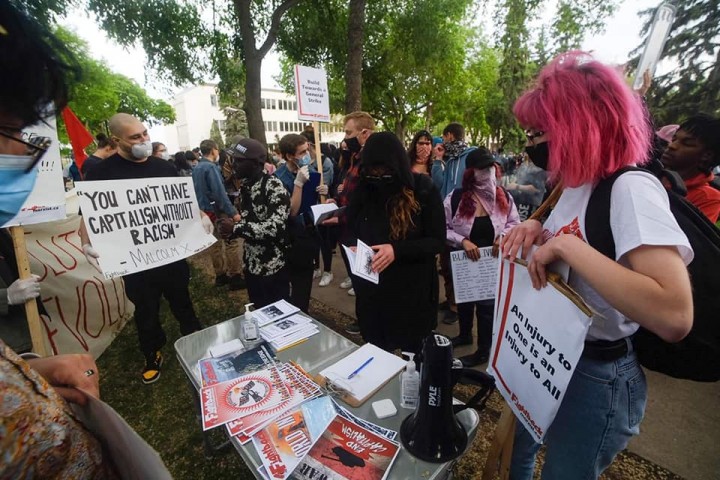
For reasons that fall outside the scope of the present document, the forces of genuine Marxism were thrown back for a whole historical period. It is this weakness of the revolutionary Marxist tendency on a world scale that makes it impossible for the masses to immediately rally to our ranks.
At this stage, our audience will be restricted to the most advanced layers of the workers and youth, for the simple reason that we have not yet accumulated sufficient forces to reach the masses directly. But it is precisely through this layer that we can reach the masses. There really is no other way.
Of course, where big opportunities present themselves, we must be prepared to take bold initiatives. Very often, an audacious intervention by just one of our comrades in a mass meeting can determine whether a strike takes place or not. It is possible that a bold initiative can propel us into the leadership of important mass movements. Needless to say, we must grasp such possibilities with both hands. But at all times, it is necessary to maintain a sense of proportion. We must not have an exaggerated view of our forces and we must understand what is possible and what is not possible at any given time.
Lenin often stressed the need for revolutionary patience. We cannot jump over the heads of the working class. We cannot shout louder than the strength of our own throat. Trotsky warned his followers that you cannot reap where you have not sown. There are no shortcuts to success. To look for shortcuts is a sure recipe for deviations, either of the opportunist or the ultraleft kind. Both are equally disastrous.
We will proceed one step at a time, setting ourselves targets that are ambitious but realizable, then check to see that they are carried out. The building of a revolutionary organisation consists of a whole series of small steps. But small advances prepare the way for far greater things in the future.
The IMT is making steady progress. This is acknowledged by our friends and our enemies alike. Our recent World School showed that our ideas are already reaching thousands of the most advanced workers and youth who are looking for the revolutionary road.
That was a huge step forward, but it is only the beginning. The thousands will be transformed into tens of thousands, and will ultimately enable us to reach millions. It is not at all the same thing to enter a new stage of the world revolution with a group of 20 as with an organisation of a thousand. That is quite a difficult task, but an unavoidable one.
The hardest task is to pass from the first small handful to the first hundred. From the first hundred to the first thousand is also not simple, but it is far easier. But to pass from a thousand to ten thousand is easier still. And to pass from ten thousand to a hundred thousand is only one step.
To borrow a phrase from physics, we need to reach the critical mass – that point where the IMT can really enter as a decisive factor in the situation. Above all, we must pay attention to the education of the cadres. We start with quality, which at a certain point becomes transformed into quantity, which, in turn, becomes quality.
That is the task before us. Only by achieving it will it be possible to put an end to the nightmare of capitalism, and open the way to a new and better world under socialism.
London, 13 Sept 2020

